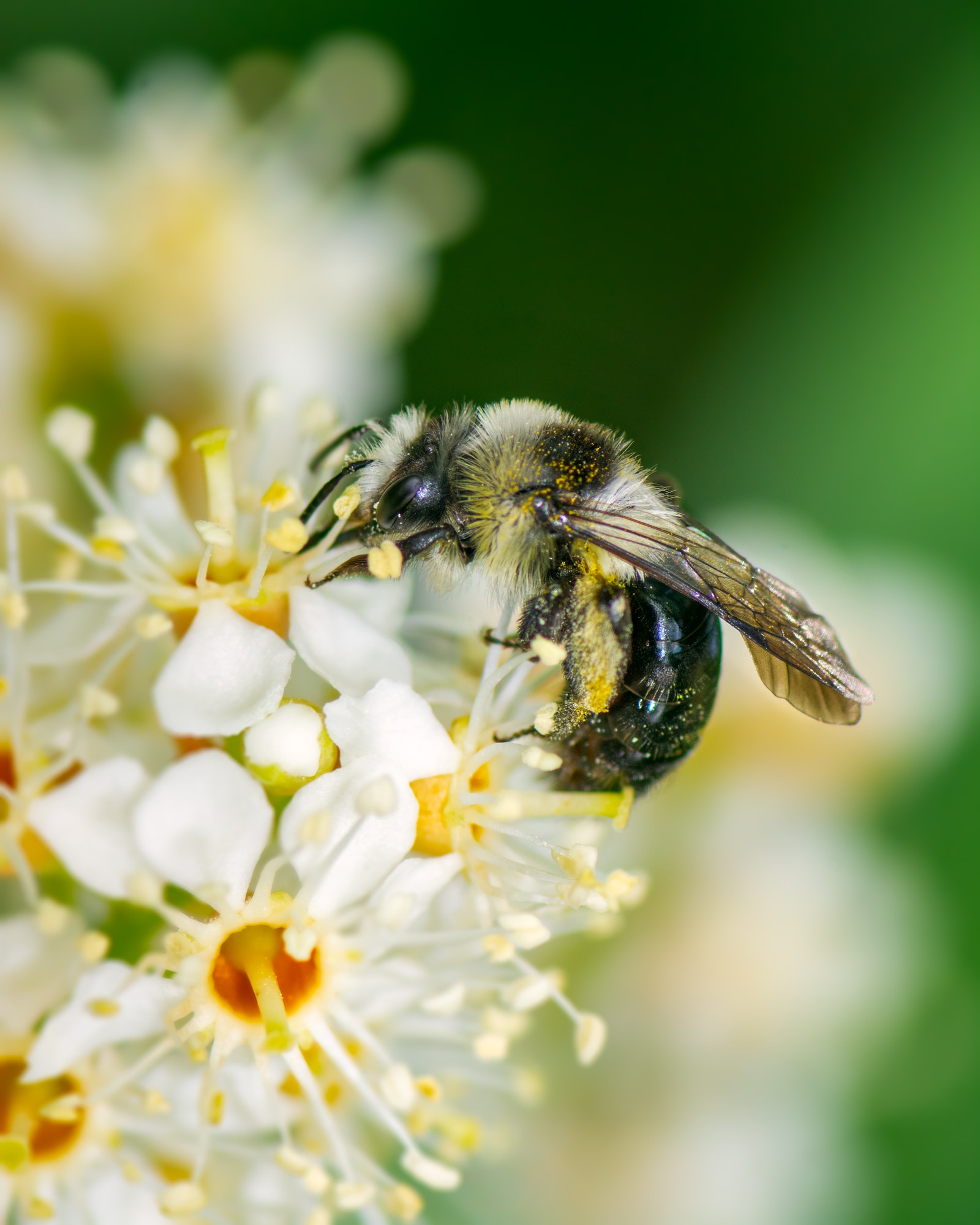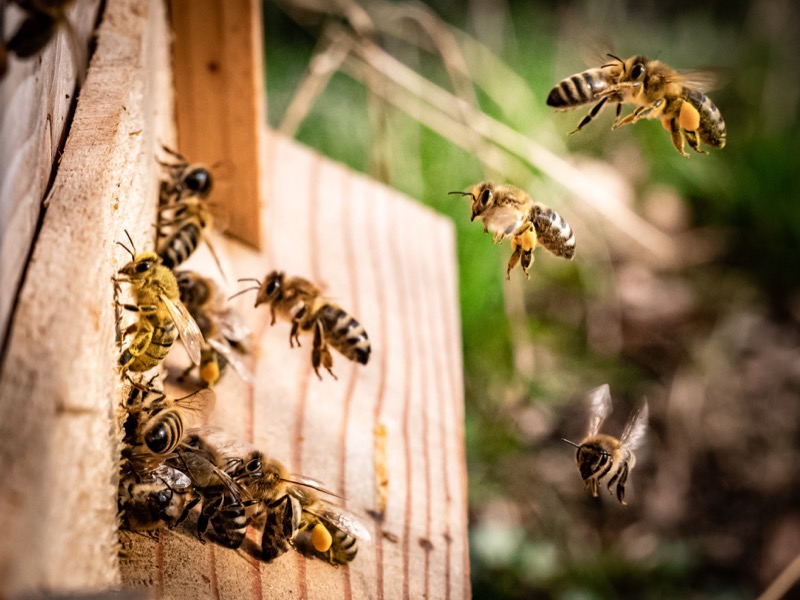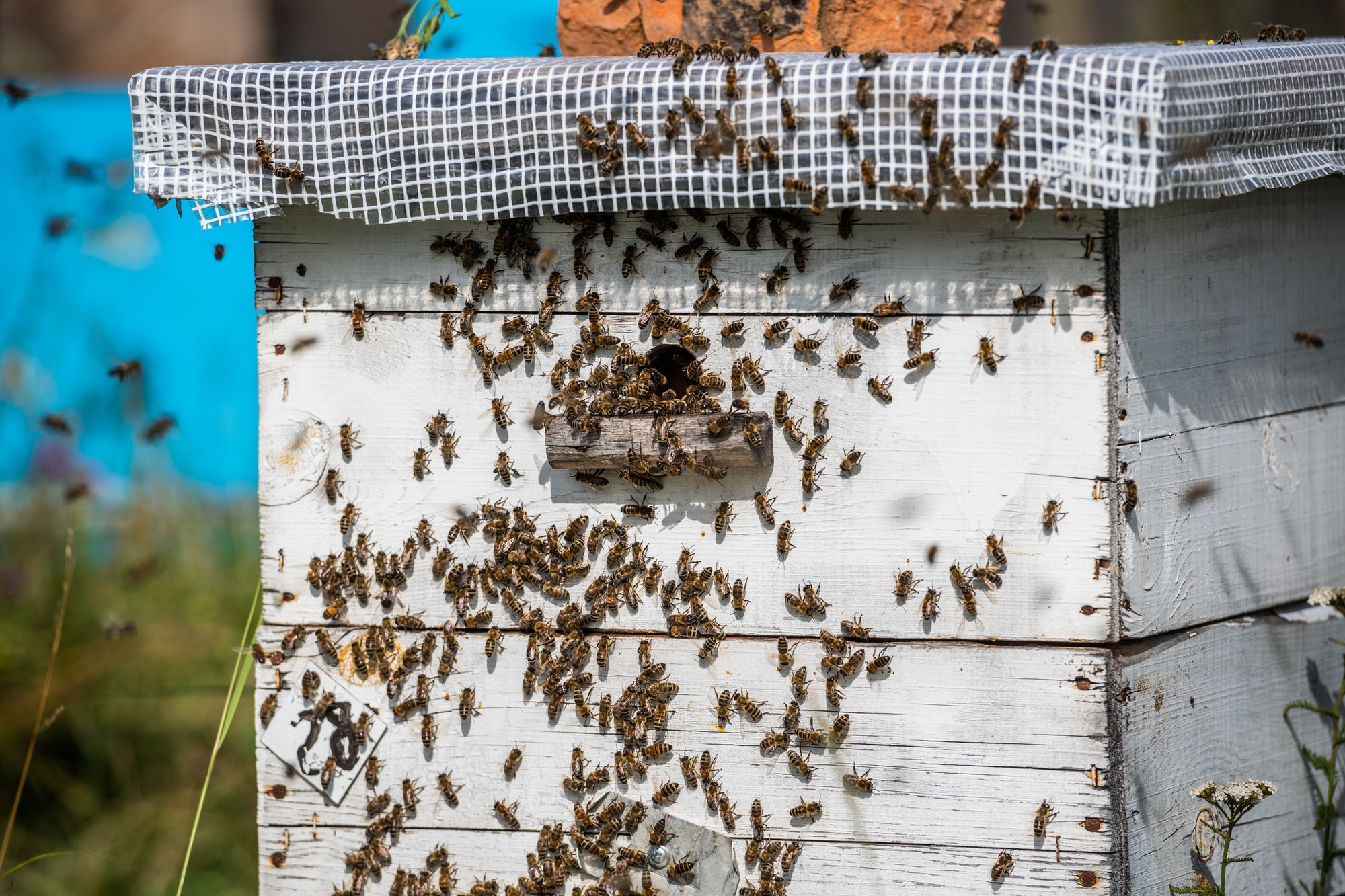Why Bees Are Important For The Ecosystem?
Wild bees, honey bees and other flower pollinating insects play a special role in the ecosystem, because many plants depend on them. Wild bees in particular are indispensable for maintaining biological diversity. Through pollination, they contribute to the reproduction of flowering plants. In the course of their evolutionary history, bee species and the plants pollinated by them have even adapted to one another in a species-specific manner. Therefore, not every bee can pollinate every flower.
Carrots, broad beans and tomatoes, for example, depend on very specific types of bees as pollinators. Several other cultivated plants are also dependent on insect pollination. According to estimates, around 80 percent of plants, including fruit and vegetables in the United States, can only be produced through pollination by bees. In North America, around 4,000 different types of vegetables are pollinated by bees. Wild bees pollinate flowers much more efficiently than honey bees and thus make an important contribution to securing yields.

The flowering plants themselves are the source of food for many other animal species, such as beetles, butterflies and flies. Bees and other insects, in turn, serve as prey for other animals. However, the number of birds in agricultural landscapes has also decreased sharply in recent years. One possible reason for this is the sharp decline in insects.
The American Beekeeping Association estimates that the number of bee colonies has decreased from 2.5 million to 1.4 million over the past 67 years. This decline in many bee species could have a long-term impact on the supply of human beings with food, since without the specific bee species certain plants could no longer be pollinated.

The term bee deaths became known to a wider public in 2006 when media reported massive honey bee deaths in the United States. This phenomenon was called “Colony Collapse Disorder”. Bees capable of flying had left their hives in many places, resulting in mass death of entire bee colonies. A similar case was seen in Europe. In Germany, honey bees also died out in 2008 in Baden-Württemberg. The cause was poisoning insecticides from the neonicotinoid group. The reports of the so-called bee deaths raise concern because bees are invaluable to the pollination of myriad plant species. Should the number of bee species continue to decrease, this could have dramatic consequences for biodiversity and the production of many foodstuffs. Indeed, developments in bees are cause for concern; but a distinction must be made here.
Because not all bees are the same: A distinction is made between wild bee species and honey bees. Honey bees have been bred by humans for several thousand years. In contrast to honey bees, most wild bee species do not live in large colonies, but are loners. However, there are some exceptions, such as bumblebees. There have been regionally different developments for honey bees in recent years. In the last 10 to 15 years there has been a sharp decline in honey bee colonies in North America and some Western European countries, including Germany.
There were also major losses in other countries in the southern hemisphere. Globally, the number of honey bee colonies has increased over the past 50 years. The situation of the wild bees is different. In Germany there are a total of 561 wild bee species, more than half of which, according to the Red List, are showing declines, are threatened or are already extinct. The World Biodiversity Council also reported in 2016 that both the number of wild bees and their species have decreased in some regions of North-Western Europe and North America.
There were also maaFor South America, Africa, Asia and Oceania there is a major lack of data that would allow reliable statements. However, local acceptance tests were also reported from there. The overall situation of the insects is also dire. At the end of 2017, for example, a study made headlines according to which the total biomass of insects in many regions of Europe has decreased by over 75 percent in the past few decades. This is of concern for biodiversity as insects play an important role in many food relationships. For example, they are the most important food component of many bird species. In addition, with over 33,000 species, insects are by far the most species-rich animal group or class in Europe.jor losses in other countries in the southern hemisphere. Globally, the number of honey bee colonies has increased over the past 50 years. The situation of the wild bees is different. In Germany there are a total of 561 wild bee species, more than half of which, according to the Red List, are showing declines, are threatened or are already extinct. The World Biodiversity Council also reported in 2016 that both the number of wild bees and their species have decreased in some regions of North-Western Europe and North America.
A distinction must be made between the causes of the decline in bee and insect species. There is no uniform, easily explainable phenomenon of “bee mortality” that affects all species and ecosystems equally. Various factors play a role in the decline in bee species. Many of the causes that threaten wild bees also apply to the general decline in insects. Other special factors that are described below also have an effect on honey bees. With the loss and fragmentation of natural habitats, biodiversity is generally decreasing. In many places, small-scale landscape elements that are vital for wild bees, such as field and meadow trees, have been destroyed, with the result that wild bees are finding fewer and fewer nesting places. And too intensive mowing of flower-rich meadows destroys the habitats and the food base of many flower-pollinating insect species. In addition, due to climate change, the precipitation and the flowering times of many plant species are changing. This also changes the supply of pollen.
The use of chemical pesticides in agriculture such as neonicotinoids or glyphosate plays an important role. The effects of pesticides on bees and on insects in general can be very different: Pesticides can be acutely toxic for bees. In particular, they block the signal transmission of the nerves, which leads to paralysis and thus to death of the insects. In addition, other causes are decisive for the death of honey bees: Many bee colonies are attacked by fungi, mites, bacteria or viruses. The Varroa mite in particular, a parasite from Asia, has caused immense damage to local bee colonies in the past. The massive deaths of honey bee colonies in the USA can possibly also be attributed to the stress of the animals from commercialized beekeeping.
Without a doubt, bees and the wider range of insects, are crucial to our existence as well. Thus, we must work harder to protect and preserve them. There is no better time than now to begin reversing the detrimental impact humans have had on the environment. The first step is educating people on the problem, and how they can contribute to a solution. This is an endeavor that will require the participation of all of the world’s 7.1 billion inhabitants. When it comes to the survival of the planet, we cannot afford to be ignorant or apathetic. The time to act is now!








